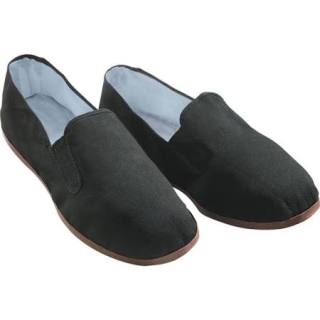With the pandemic slowing down our lives for better or worse, there’s no doubt that the impact of a pause like this has had a rippling effect for everybody both mentally and physically. Businesses of course, especially small business, have been hit hard across a multitude of industries.
One such industry that has taken a tough hit is sports, in particularly traditional martial arts. I’ve been a martial arts practitioner, enthusiast, owner and instructor roughly most of my adult life and in that time I’ve never witnessed anything like a scenario we face today. Schools for traditional martial arts and local shops where martial arts equipment are sold have completely shut down. I’ve even seen bigger schools that focus on mixed martial arts close their doors and take down their signage.
Just as things are looking brighter with the introduction of a vaccine, slowly businesses can begin to recover. Even with the availability of PPP (Payroll Protection Program in the U.S.), there are even more regulations that govern how small businesses can operate in regards to employees and independent contractors, which pose more challenges for small businesses as they move to reopen.
That being said, where does the traditional martial arts studio and related businesses go from here? Unless they have found a way to go completely digital, or transition some part online, the answer to this question is uncertain. As of March 15th, a lot of States in the U.S. have some type of tiered reopening plan which allows for some percentage of patronage including the continuation of recreational contact sports. The unique thing about a martial arts studios is that it is both a small business and a close contact sport. However, instruction of some traditional martial arts isn’t close contact at all and minimal if any.
Something that I have taken away from my practice is the ability to be adaptable. Combined with a beginner’s mindset, I want to propose a few questions that could provide food for thought as traditional martial arts studio owners and instructors seek to reopen and practitioners and students look to return or start training.

First of all we must embrace the inevitable which is traditional martial arts studios are too traditional. Gone are the days of students being introduced to a new art form by walking into a studio to simply sign up for a free class. Let’s respect the fact that consumers are more sophisticated and educated these days with tools like YouTube, Twitter, Yelp, Instagram at their disposal for information. Albeit there’s nothing like the real experience, in today’s society people are learning in all types of ways, including virtually.
Is the old model of a belt system necessary or better yet is it relevant? The belt system was originally introduced to the States as a way to display ranking, eventually turning into the business model utilized by a lot of “black belt mills” today. This essentially keeps the doors open. But is it effective in teaching and retaining the deeper meaning and universal applications that traditional arts contain? Some would argue that a belt system is irrelevant because it merely acts as an outward reward. Others would contend that people need a reward to further boost confidence and self-esteem. What do you think?
Regardless of a belt system or not, how does it correlate with a studio’s revival coming out of a pandemic? I feel that this is an important question to ask yourself as an owner. It’s also important for a student to ask themselves how they feel about a belt system. Given that a lot of time has passed since we could go out and be in public without a care, it has given practitioners and potential students an opportunity to reflect on what is truly important to them and what they want from their training. Do belt systems create community or division amongst the student body? Is it used for profit or is it setting a student up for enlightenment? I suppose that is a question of culture, about the art itself as well as the studio teaching the art.
For me, I’ve trained at studios that live and die by the belt system for profit and some that literally maintain their lights with that as their business model. Conversely, my best experiences have been training in systems that don’t believe in a belt system. The classic saying, “belts are used to hold up your pants”, comes to mind. To hold up pants not hold up an entire school.
Something else to consider as studio owners and instructors begin the financial recovery process. Does the studio or owner have a strategy for growth? Growth in diversifying their student base as well as their avenues to generate income. Thinking back on the idea of incorporating a belt system, something it can potentially do is hinder an owner/instructor’s ability to grow out of their comfort zone and allow for settling on old ways. This is dangerous. Honestly, a business owner should never become stagnate. I believe this is where the word “traditional” becomes a crutch. The studio becomes stale as well as the art.
Why is this important to think about? Experience and innovation. This is key to introducing traditional martial arts to seasoned practitioners and new students alike. This is how studios can stand out. Students remember, more than anything what they’ve learned and what they experience. If they truly feel the art is fresh and innovative in ways that relates to modern times, speaks to them, their experience is rewarding in itself. 98% of the schools I’ve visited or trained at are boring and out-of-date. Quite honestly, forgettable. Tradition can still be taught through the philosophy and history of the martial art. Studio owners and instructors have to be willing to make this a part of the foundational curriculum. And not a simple blurb on a students first day about how the art was created or where it comes from and who to bow to. There is meaning behind each movement, lessons on how to be present or in-the-moment, and applicable concepts that go beyond martial arts that extend into our daily lives and rituals.
It should go without saying that most studios, by now, have implemented the use of social media to communicate to their followers. And if so, was it easy to introduce new ways to communicate about the studio and about the art? It should be part of the belief of the studio, the ethos if you will, to introduce new ways to experience training to gain and retain students as well.
I talked about the curriculum earlier. That should be reviewed twice a year, if not annually at the very least. I talked about the belt system and the weight that it carries or doesn’t carry. That is something that should be reconsidered. Perhaps moving to tiered or leveled curriculum may be a better approach. All things considered, it’s time to not only recover but also a time to revive and reinvent oneself, one’s art form, practice tradition in similar but innovative ways, and reinvigorate the traditional martial arts studio.
It’s time to avoid the homogenized drudgery that is the “traditional” martial arts studio. Students should be aware that if they settle for the status quo that’s exactly what they will experience.
To further assist in jumpstarting the revival process and to keep the conversation going, I have created a Revival Survey, which can be downloaded and completed at your convenience. Once completed, please let me know what you have discovered and what you think your first step should be. Thank you!

















